- News
- Reviews
- Bikes
- Accessories
- Accessories - misc
- Computer mounts
- Bags
- Bar ends
- Bike bags & cases
- Bottle cages
- Bottles
- Cameras
- Car racks
- Child seats
- Computers
- Glasses
- GPS units
- Helmets
- Lights - front
- Lights - rear
- Lights - sets
- Locks
- Mirrors
- Mudguards
- Racks
- Pumps & CO2 inflators
- Puncture kits
- Reflectives
- Smart watches
- Stands and racks
- Trailers
- Clothing
- Components
- Bar tape & grips
- Bottom brackets
- Brake & gear cables
- Brake & STI levers
- Brake pads & spares
- Brakes
- Cassettes & freewheels
- Chains
- Chainsets & chainrings
- Derailleurs - front
- Derailleurs - rear
- Forks
- Gear levers & shifters
- Groupsets
- Handlebars & extensions
- Headsets
- Hubs
- Inner tubes
- Pedals
- Quick releases & skewers
- Saddles
- Seatposts
- Stems
- Wheels
- Tyres
- Health, fitness and nutrition
- Tools and workshop
- Miscellaneous
- Buyers Guides
- Features
- Forum
- Recommends
- Podcast
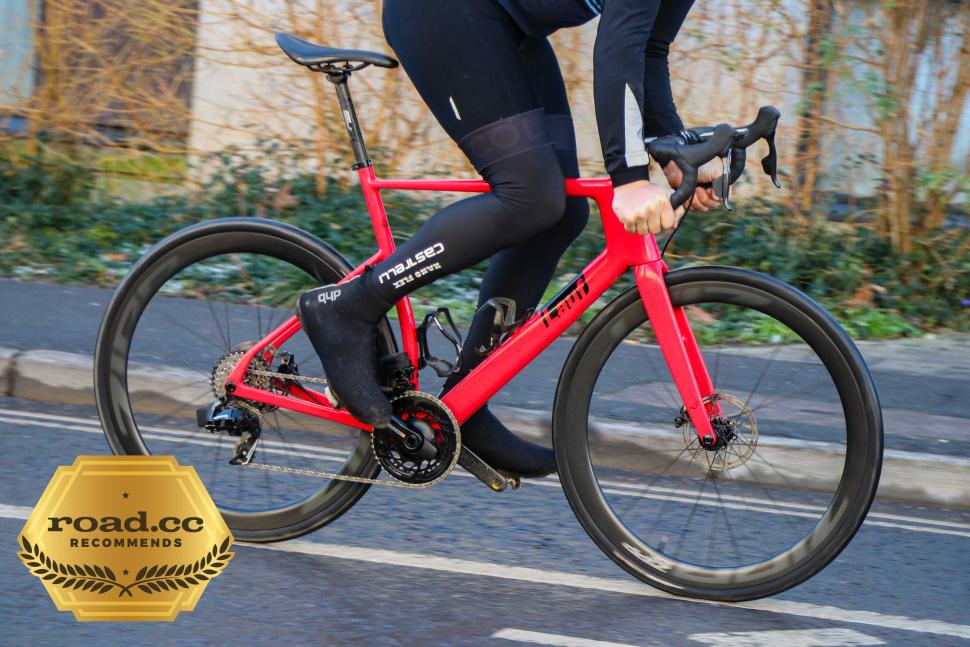 Lauf Úthald
Lauf Úthald£4,500.00
VERDICT:
Fast, comfortable and well-specced road bike with a relaxed and assured ride
Quick
Comfortable
Light
Good value
No hidden mudguard mounts
Weight:
7,930g
Contact:

This product has been selected to feature in road.cc recommends. That means it's not just scored well, but we think it stands out as special. Go to road.cc recommends
At road.cc every product is thoroughly tested for as long as it takes to get a proper insight into how well it works. Our reviewers are experienced cyclists that we trust to be objective. While we strive to ensure that opinions expressed are backed up by facts, reviews are by their nature an informed opinion, not a definitive verdict. We don't intentionally try to break anything (except locks) but we do try to look for weak points in any design. The overall score is not just an average of the other scores: it reflects both a product's function and value – with value determined by how a product compares with items of similar spec, quality, and price.
What the road.cc scores meanGood scores are more common than bad, because fortunately good products are more common than bad.
- Exceptional
- Excellent
- Very Good
- Good
- Quite good
- Average
- Not so good
- Poor
- Bad
- Appalling
The Lauf Úthald is either a strange outlier in the constellation of road bikes, or a portent of things to come. I'm certainly hoping it's the latter. If you like to have a fast bike in the shed but you're not a racer, then the Úthald has a lot to recommend it. Pretty much everything that Lauf has done with this bike is a hit rather than a miss in my opinion, and it deserves to do well. That's not always the fate of trailblazing bikes – Cannondale Slate, anyone? – but it's well worth your consideration and it's easy to recommend.
For more options at various prices, check out our guide to the best road bikes.
> Buy now: Lauf Úthald for £4,500 from Lauf
Lauf describes the Úthald as a 'fast fit performance bike' but Úthald actually means 'endurance' in Icelandic. So, which is it? A performance bike or an endurance bike? Sort of both, really.
Lauf Úthald: Frame and fork
With a stack-to-reach ratio of 1.48 in the L size I've got for review, it's more upright than a pro peloton bike, but not by a great deal. Race bikes these days tend to come in around 1.45 in a large, on average; the lower the number the more aggressive the geometry, and smaller sizes are generally lower too.
Most endurance bikes are 1.50 and above in a large, and up around 1.60 in some cases, so the Úthald is an in between kind of bike in that regard, but closer to current race geometry than endurance geometry based on that one ratio, which is usually a good indication of how a bike will feel as it underpins what your position will be like.
That's not the whole story here, though. The head tube angle of the Úthald is just 71.5 degrees across all sizes, which is shallower than you'd expect; 73 degrees would probably be considered normal for a race bike, so why the slack front?
'Stable handling is generally paired with slower endurance bikes with a taller/relaxed fit of the rider', says Lauf. 'While faster-fit road bikes are being differentiated from endurance bikes by less stable steering, in an effort to make them feel faster.'
That's certainly true in some cases – for example, bikes like the Specialized Diverge and Merida Silex – although many endurance bikes are steeper at the front than the Úthald. Anyway, Lauf's contention is that road bike geometry at the front end is mostly governed by two things: it's always been like that, and the steeper angle makes the bike feel quick. I expect there's truth in both, although it's not the whole story. Slackening the head tube makes the steering a bit slower, which helps with stability. The flip side is that the bike will be a bit less responsive.
At the other end it's a different story. Lauf has kept the chainstay length to the absolute minimum – 405mm is as short as you're (technically) allowed to go with a SRAM drivetrain, and it's as short as pretty much any race bike you'll find. So you've got a super-tight back end to keep the wheelbase short. Lauf says that keeping the bike engaging by giving it a short rear means it can slacken off the front a bit for that extra stability and keep the bike feeling like a performance bike.
Geometry-wise, then, it's an interesting mix.
There's a bunch of other stuff going on too. Lauf makes a big play of its Integrated Compliance Engineering, or ICE for short, which is Lauf's way of saying 'vertically compliant' without using those words.
At the back the frame is designed to deform under load: the top tube slims out, and a standard seatpost clamp is used instead of a wedge which can lock everything in place. The seatstays are dropped, which allows the seat to move backwards and downwards under load as it pivots.
Lauf claims that a 75kg rider will move the saddle around 4.5mm by sitting on it, and 15mm of 'travel' is available. If you follow another rider on the Lauf you can see the movement, and you can also feel it when you ride. The amount of movement, and the extent of it, is pretty similar to a Canyon VCLS seatpost, although in that seatpost the design keeps the saddle at the same angle through its travel, while the Lauf frame will tend to tip the saddle backwards as it moves.
Because the frame is designed to work in this way it doesn't use any high-modulus carbon, which is lighter but also much stiffer and so harder to engineer into a frame designed to flex. In spite of that, the Úthald frame isn't heavy, at 985g for a painted medium frame and 365g for a painted fork. Our Race Wireless build comes in just under 8kg in a large size.
At the front the ICE is implemented not in the frame and fork but in the handlebar. This makes sense – the fork is transferring force from the road along its length, so it's hard to engineer any compliance there. The bar is perpendicular to those forces, though, so it can be designed to flex. Lauf's Smoothie bar uses glass fibre in the central portion for extra compliance at the front. Again you can see the flex if you load the bar, although it's less noticeable.
Lauf doesn't make any specific – that is, numeric – aero claims about the Úthald, but aerodynamics has played a part in the design. 'To make the fastest bike possible, we reach for the lowest hanging aero fruits,' it says. 'Hence, we focus our aero-efforts on the front part of the bike where the airflow is still laminar.'
To that end, the head tube is narrow and very deep, and the down tube flares towards the bottom bracket, which gives some shelter to a water bottle and also increases the stiffness of the BB area.
The seatstays are dropped mostly for compliance reasons, but that does tend to confer an aero benefit too.
The brake hoses aren't hidden in the head tube, though. Lauf says that this makes minimal difference to the overall drag (fractions of a watt for most riders) and the external routing here makes everything else – working on the bike, tweaking your position, packing it into a box for a holiday – easier. I'm fully on board with this, as I am with the threaded bottom bracket. More and more bike companies have moved away from press-fit bottom brackets, where for many the drawbacks outweigh the benefits, and I wonder if there'll be a similar move against integrated routing coming down the line.
For the sake of two bits of hose at the front of the bike – the Úthald, like all Lauf's bikes, is wireless-only by design – it's just not worth the effort and the extra hassle. Where the hoses are routed internally, the Úthald frame and fork have full hose tunnels to minimise rattle and make maintenance easier.
The Úthald comes with 32mm tyres, and will take up to a 35mm. Now that frame designers aren't constrained by calliper brakes, it's not unusual to see more tyre clearance even on pro-level bikes. It is unusual to see a tyre this big specced on what's billed as a performance bike, though.
Lauf Úthald: The ride
So does this fairly novel approach to building a road bike mean you end up with something fast and comfortable? Well, there's a bit to unpack. But in short, yes. Yes, it does.
For the first ride on the Úthald I was with fellow road.cc tester Jez, who was riding a carbon gravel bike with not only the VCLS seatpost mentioned earlier, but also a Coefficient Wave handlebar designed to do the same job as Lauf's Smoothie bar.
We're the same size so it's simple to swap between bikes to compare and contrast. The findings from that were that the Lauf doesn't have quite as much cush at either end as using those two components, but it feels more effectively damped, and the bar responds better to sprint efforts; it's not designed to give as much as the Wave bar in the drop position.
Moving from one bike to the other – bikes that are nominally about the same size but quite different in terms of geometry – the Lauf felt very much the race bike of the two, more compact and with a more aggressive feel, even with a head tube angle that was exactly the same.
It definitely works. I've come to the Lauf direct from testing the Moda Alto, which is a pretty classic road frame in terms of its ride: firm and laterally stiff, with the tyres expected to do the heavy lifting when it comes to comfort.
With the Lauf's 32mm tyres pumped up hard, the difference in the ride of the Lauf frameset is very noticeable. There's enough movement at the saddle that you can see it if someone else is riding the bike, and you can certainly feel it making a difference to poor tarmac. Lauf says that the frame and bar offer about the same amount of cushioning as a 23mm tyre, on top of the actual tyres of the bike. So we're not talking about huge amounts of give but it's definitely enough to make a noticeable difference. As road frames go, this is a comfy road frame.
And then of course you have big tyres as well that you can slacken off a bit pressure-wise. The sweet spot for me (as a fairly heavy rider) was about 65 in the rear and 60 at the front. The bar isn't as effective overall as the frame, and that's to be expected: you have more to play with in the frame, and you don't want the bar to give you 15mm of movement in the drops on a road bike, which it would have to to match the frame. So I ran the front a bit softer than the standard road bike split would suggest was right.
The Maxxis High Road tyres (we've tested the non-tubeless SL version) are good all-rounders, with a supple 170tpi casing and plenty of grip when you lean them over. Longevity isn't the best, but they're fun while they last. It's enough tyre that in a sprint, and with them not pumped up especially hard, the bike can feel like it's flexing; I don't think it is that, more just some lateral give in the carcass.
Realistically, you're probably not going to be buying the Úthald for charging round your local crit race, although there's nothing in the geometry and build that would really prevent that. If I were planning to race it I'd probably drop back to a 28mm tyre and lean more on the frame's cushioning than the tyres.
And what about the slow handling? Again, probably not your first choice for the cut and thrust of racing, but based on my riding experience it would be fine, and for anything else it works very well. The bike is short, especially at the rear, and still feels agile. I've not encountered any situations where the slacker head angle has presented any problems, and I found it worked very well for fast riding and also climbing, where the bike doesn't tend to wander as much, especially out of the saddle.
I even made the steering a bit slower by swapping out the 110mm stem for a 130mm, to get the position a closer match to my usual road bike and to give me just a bit more room up front. And because the Úthald has a standard bar and stem, and the hoses run externally, that's trivial to accomplish. It took about five minutes. Which brings me on to that: well done Lauf for making some sensible design decisions for 'normal' riders.
I count myself as a normal rider. I don't race any more, except on Zwift, but I like to have a fast bike in the shed. But realistically, what good can come for me of routing the cables through the headset? The half a watt saving is neither here nor there. You might like the look of it, and that's okay; personally I'm not that bothered, especially on a wireless bike where it's just a couple of short bits of hose. But external routing here means you can play with your position, and you can pull your bar off easily to stick your bike in a case for your holiday. I haven't taken the brakes off but because of the routing, and the fact that the hose tunnels are full length inside the frame, it'd be simple. The same for the bottom bracket: you can unscrew it, and then you can screw a new one in, with minimal tools.
Sometimes I look at a new bike and wonder what I'd do with it if I needed to work on it. Not here: everything is straightforward. Again, it's horses for courses: you might always take your bike to a bike shop for anything that needs doing. But the simplicity of the Lauf is a big draw to me, and I can't really see any downsides. Even if you're paying someone else to do it, it won't take as long.
In terms of performance, it's not giving anything away that I can discern to a more traditional bike. With 25mm of spacers and the swapped-out stem the Úthald is more or less the same riding position as my (when I was racing) race bike, a slammed 2016 Merida Scultura; that sounds like it would be very low but actually the Scultura was unusually tall at that point in its development.
I could go lower on the Lauf, and have done to try it out, but in my standard position it's a quick bike. Sometimes a bike feels like it needs to be going at a certain speed for you to be getting the best out of it, but the Lauf isn't like that. There's no breakpoint where you think, 'well, now I'm really flying' – it's just generally quick in a composed kind of a way.
Looking at average ride speeds on Strava isn't exactly science as there are so many other variables than the bike, but some of my quickest recent rides have been on the Úthald. It's fast on good roads but where it really shines is on more mixed surfaces, keeping more speed on broken tarmac as the tyres and frame work together to stop the surface robbing you of your momentum.
It'd be a great bike for fast summer rides (at least I think it would be, testing conditions have been, well, challenging) but it's also a much better shitlaning bike than it has any right to be. There's definitely a part of me that wishes Lauf had included some hidden mudguard mounts.
Lauf Úthald: The build
The Race Wireless build I've been testing comes with SRAM's Force AXS wireless groupset in a 2x12 configuration, with a 48/35-tooth chainset (incorporating a double-sided power meter) and a 10-36T cassette. That gives an impressive range of gears: the 48x10 is a similar ratio to a 53x11, and at the other end you get a 35x36 gear that's below 1:1 for winching yourself up the steep stuff. That's almost a 500% range bottom to top.
SRAM's single paddle shifting is pretty intuitive, with a single click on either paddle shifting the rear mech, and both together switching chainrings. Shifts are crisp and reliable, and the life of the mech-mounted batteries is very good.
The D2 flat-mount hydraulic disc brakes are also very effective, running on 160mm rotors front and rear. There's plenty of power, and the feel of the brakes is very good.
Like Shimano's Ultegra, SRAM's Force is the why-would-you-pay-more groupset; save for minor weight savings there's little to be gained by forking out extra for the top-of-the-pile Red groupset. The lever shape, functionality and performance are basically the same. It's a good-looking groupset too, with clean lines and oil-slick decals.
The wheels are Zipp's tubeless-only 303S which Matt was a big fan of when he reviewed them in 2020. They're an excellent all-round set of wheels. At 1,550g for a pair they're a decent weight, and the 45mm rim is a good depth for all-round riding. They can catch a gust of wind when it's really blowy, but they're pretty well behaved and suitable for year-round riding. They're stiff laterally, with very little obvious flex or brake chatter from either end of the bike.
The 21mm internal width is best suited to 28mm tyres upwards, and that wide internal measurement means that tyres will size up a bit bigger than stated. The 32mm Maxxis High Roads fitted to the bike actually measure at 34mm on the rims.
The hookless design means the wheels are only suitable for a tubeless setup, but with bigger tyres at lower pressures that's what I'd go for anyway. The tyres, as I've mentioned before, are good all-rounders.
Other finishing kit is good quality. Fizik's Aliante R5 saddle isn't one I'd personally choose off the shelf, but it's comfortable enough and easy to swap if you don't get on with it. The FSA SL-K carbon seatpost is a dependable unit with an unfussy design.
We've already covered Lauf's Smoothie bar, which in turn is covered with Lauf Lush tape; this has proved to be comfortable and grippy in all conditions. It's not as good as some premium tapes but it's plenty good enough to not need replacing until it's worn out.
FSA also supplies the stem and the headset, and the bottom bracket is a BSA-threaded SRAM unit. There aren't any corners cut here, even with the less glamorous bits of the build.
Lauf Úthald: Value and overall
Lauf lists the Race Wireless build of the Úthald at $4,690 on its website, but because the bike is being imported directly into the UK to you as a consumer you'll be liable for delivery and VAT on top of that. You're looking at around £4,500 shipped to your door, or £4,700 if you want a colour other than black. So not cheap, but given the build, it's still really good value. You'd be hard pressed to find a road bike in a similar build for a similar price.
There are a few really good bikes out there for comparable money – the excellent Vitus Vitesse Evo, for example, is £4,399 with SRAM Force AXS and Reynolds AR46 wheels (we reviewed the CR eTap AXS in 2021) – but for the most part you'll be spending a lot more than this. A Merida Scultura Endurance in a similar build is going to set you back £5,600, and a Cube Agree C:62 is five grand.
We loved the latest Giant Defy in its money-no-object build, but a SRAM Force AXS bike will cost you a grand more than the Lauf.
So it stacks up well from a value perspective, but should you buy one? Well, the short answer to that is: yes, if you're anything like me. This is a bike that's fun to ride, light, quick, comfortable, easy to tweak, easy to maintain and good value. What's not to like?
It's a bit esoteric in terms of its geometry but I like what Lauf has done here, and I can understand its reasoning. It's more aggressive than most endurance bikes, and the short rear end gives it plenty of agility even as the slack head tube gives it an assured feel that's easy to live with and ideal for fast riding that isn't racing.
All in all, it feels more like a race bike than anything else, but with a level of comfort you'd be hard pressed to find elsewhere. For the weekend warrior who wants a quick bike in the shed but doesn't need the marginal gains of a top-end race machine, it's pretty hard to fault. I'll certainly be sad to see it go, and I'm hopeful that it's an indicator of the direction road bikes for normal people will be taking over the coming years. More like this, please.
Verdict
Fast, comfortable and well-specced road bike with a relaxed and assured ride
road.cc test report
Make and model: Lauf Úthald
Size tested: L, 57cm
About the bike
List the components used to build up the bike.
Frame: Lauf IRM* Úthald carbon frame, 12x142mm thru-axle, UDH
Fork: Lauf IRM* Úthald carbon fork, 12x100mm thru-axle, 160/180mm rotor compatibility
Handlebar: Road Smoothie (XS/S: 38 M: 40 L/XL: 42) compliance-fiber handlebar
Rear Derailleur: SRAM Force AXS D2, wireless
Front Derailleur: SRAM Force AXS D2, wireless
Shifters: SRAM Force AXS D2, wireless
Brakes: SRAM Force D2 Flat mount Hydraulic (160mm CL rotors, front/left and rear/right)
Crank: SRAM Force DUB 35/48T carbon
Power meter: Dual-side SRAM chainring integrated
Saddle: Fizik Aliante R5
Seatpost: FSA SL-K, 27.2mm, carbon
Wheels: Zipp 303S carbon
Tires: Maxxis High-Road 32mm tubeless ready 170TPI carbon bead
Stem: FSA Omega-Pro
Headset: FSA Orbit, IS 42/52 (45°lower)
Bartape: Lauf Lush
Cassette: SRAM Force 10-36, 12 speed
Chain: SRAM Force flat-top
Bottom Bracket: BSA SRAM DUB
Weight: 7.95kg / 17.53lbs (avg. for size medium)
Tell us what the bike is for and who it's aimed at. What do the manufacturers say about it? How does that compare to your own feelings about the bike?
Stable handling - on a fast-fit road bike!
We firmly believe that a fast fit and stable handling should not be mutually exclusive. Because, why should they?
Ever since the development of the True Grit gravel bike (back in 2016) we've been itching to use our learnings from that project to make a 'new-school-fast' road bike. When developing the True Grit we dived deep to gain understanding of the physics of drop-bar bike geometry and dynamics. We questioned what had been done by others, why they did it that way, and eventually: How it could be improved upon.
A key driver behind Lauf coming out with the True Grit gravel bike was that we felt like nervous handling (steep head angle, short trail) was holding them back when riding on-the-edge. To validate our hypothesis, we made (and rode) a variable head angle bike prototype, re-visited the fundamental physics of bicycles and... any chance we got, questioned bike engineers/designers and journalists on road and gravel geometries.
The main question we asked ourselves, and others, was: Why do road and gravel bikes have such steep head angles? Generally, we got these two answers:
Because that's how road bikes have always been, and
Because that makes them feel fast.
Needless to say, we weren't convinced by these arguments. We believed that in order to go fast, a bike should be stable. This way the rider can put down more power efficiently, and go faster confidently. Sure, there were (and are) bikes out there that emphasize stable handling. But... stable handling is generally paired with slower endurance bikes with a taller/relaxed fit of the rider. While faster-fit road bikes are being differentiated from endurance bikes by less stable steering, in an effort to make them feel faster.
Road cycling is unquestionably the most conservative segment of cycling. It is often as much about tradition and feel, as it is about the science of going fast. Frankly, this made road bikes all the more exciting to us at Lauf. Where there is tradition and conservatism, there tend to be opportunities.
We suspect more road bikes will follow and introduce stable geometries on fast-fit road bikes. Because: When you are stable and confident, you can ride faster. Period.
Compliance - on a fast-fit road bike!
The second big revelation that led to the creation of Úthald was when we realized how much comfort/compliance/suspension we were able to integrate into our latest (and greatest) gravel bike frame, Seigla. Without resorting to pivots or moving parts, that would bring complexity, maintenance and excess weight.
We immediately realized that our findings from the Seigla gravel bike eventually had to be put to work on a road bike as well. On a road bike the benefits shine even brighter, as road bikes cannot rely to the same degree on big tires for compliance.
Sure, compliance has been done on road bikes, but not like we do on Úthald. To be completely honest, a lot of bike frames that claim to be 'compliant' really aren't. They just might be 'X% more compliant' than the outgoing iteration of that same bike, which perhaps wasn't that compliant at all. While on Úthald we achieve compliance of the same magnitude as others needed pivots to achieve.
The sag from a 75kg/165lbs person sitting on the saddle of a medium Úthald is 5mm, measured in a direction straight towards the rear hub. This means that when you hit that nasty pothole you could easily see travel around 15mm! Which again, is pretty much the same benefit you'd get from a heavier pivot-based gravel bike system (from a certain competitor).
Skeptics will say: 'This won't matter anyway, as all the compliance comes from the tires, and not the frame'. We don't blame them, as usually this holds true. However, if we compare the Úthald frame compliance directly to tires... Úthald's 15mm of compliance are actually in the ball-park of what a 20-23mm wide road bike tire can provide (when pushed close to a 'snake-bite'). So, effectively we're giving you comparable compliance to a 20-23mm tire, in addition to the compliance you get from the tire you are actually riding. That's not nothing!
Here's the best part though: We do all this on a fast-fit road bike. Because, why wouldn't we? We know that a smoother ride translates to a faster ride*. So, why should only slower riders get the speed benefits of compliance/suspension?
*even if it might feel slower/calmer.
ICE'd
In the Lauf dictionary ICE stands for: Integrated Compliance Engineering.
There is an old saying in Icelandic 'don't cross a river for water' ('ekki sækja vatniõ yfir lækinn'). When there is an opportunity to do something simple, don't make it complicated!
ICE'd in the front
Many choose carbon handlebars over aluminum ones to get that extra compliance (flex). With the Road Smoothie handlebar we took things further. Our novel use of impact resistant high-end glass fibers in the central portion of the Smoothie Road translates into greatly improved ride quality. Without links, pivots, extra structures or proprietary standards.
ICE'd in the back
Our pivot-free rear suspension works through the combined effect of these 5 properties:
The slim rear-portion of the top tube transforms the top tube / seat tube junction to a virtual pivot. The use of a standard seat clamp is critical for this function, as it avoids the added bulk of a wedge seat clamp that would 'lock' the virtual pivot.
The vertically slim seatstays allow the required twist up/down.
The dropped seatstays channel the ground force so it bends the seat tube (since 1. and 2. above permit), resulting in a back/down movement of the saddle, along with a little dose of rear axle travel to go with it.
The offset and tilted seat tube doesn't just provide tire clearance, it translates into a (more desirable) more downward suspension path for the saddle. Note that the rearwards portion of seatpost flex doesn't add comfort, it is the downwards component that counts.
A good amount of exposed seatpost, giving the required lever arm towards the virtual pivot (ST/TT junction).
Big tires - on a fast-fit road bike!
It is remarkable how we have spent decades wrapping our heads around the fact that wider tires can actually make us faster.
It is only logical though, as our built-in speed sensors (ears, eyes and sensory nerves) immediately interpret a harsh/unstable ride as a fast one. When there is a lot of 'stuff' going on, a lot of 'action', we must be going fast?
When you think about it... this speed perception paradox didn't start to crumble until we had widespread use of power meters*. Suddenly we had tools to quantify speed vs. input, and gradually tire widths started climbing up.
This (slow) journey towards the optimum is not quite done yet.** Despite data suggesting wider tires being faster, widths have generally only come up by a millimeter or two between bike generations. Even then, fast-fit road bikes have largely been left out, still having their wheels stuck in the speed perception paradox.
Let's stop wasting time. Let's start riding faster.
Úthald comes on 32mm tires, and supports up to 35mm. For speed!
*Úthald comes with a power meter on all builds, so go ahead and do all the data crunching you can wrap your head around!
**Your optimum tire width depends on your power, weight, riding surface, riding type, and preference. It's always a tradeoff between a wider tire's:
a. Lower rolling resistance, improved grip/cornering and increased comfort (enabling higher power output), vs.
b. Increased air resistance.
No one should claim that a certain tire width is 'the best', it's not that simple. But, what we at Lauf will claim is this: The vast majority of road cyclists would be faster if they had a bit wider tires.
Short chainstays
First, let's establish one thing: Stability in the front is more beneficial than at the back. It's at the front where you really can get into trouble. Be it an unexpected pothole or a sharp/fast turn, it's at the front where stability is crucial.
We design the chainstays to give you the maximal sense of involvement. So... we can then turn around and inject more stability to the front, while keeping the bike engaging.
How short are they? As short as possible*: 405mm.
*SRAM drivetrains do not support shorter chainstays than 405mm, and our desired tire clearance of 35mm wouldn't either.
Threaded BSA Bottom Bracket
It was a bit off-trend when we initially did this on our True Grit gravel bike back in 2017. But we felt it was the sensible thing to do. Minimal hassle and minimal creaking.
6 years later, threaded bottom brackets are becoming the industry standard again. They just work!
Wireless shifting only
We dislike complicated and/or rattle-prone routing, so all Lauf bikes (gravel, and now road) have full length tunnels built into the frame to make sure the right things pop out in the right places and nothing rattles.
However, the luxury of tunneled routing isn't entirely 'free'. The tunnels don't weigh nothing. So, realizing that we would only ever build our Úthald with wireless shifting we decided to optimize it for SRAM AXS and wireless-cockpit Shimano Di2. We spent no extra grams* on shifting tunnels that generally wouldn't be used.
*That cost would have been somewhere close to 50g
Sensible brake hose routing
Cable routing became an interesting topic by the coffee machine at our office (and in Iceland we drink a lot of coffee!). Most brands have been moving to fully internal through-the-headset routing lately, so we had to ask ourselves: Should we?
For us, the fundamental question became: Does fully internal routing provide benefits that outweigh its downsides?
We dove into all the literature we could find on the topic, and our findings were:
Fully internal routing...
...does not give you the marginal aero advantage that some would like you to believe. Especially on wireless-shifting-only bikes such as Úthald.*
...can be a pain to work on.
...can be expensive to have worked on.
...gets in the way of quick fit-adjustments that can make you faster through substantial aero- or comfort improvements.
...can make traveling with your bike a hassle.
Hence, our conclusion was that fully internal routing is mostly an aesthetics thing, best served to cyclists that find it difficult looking at brake hoses entering bike frames. So, we opted out!
However, it might make you a happier cyclist to know that Úthald has full-length tunnels in its fork and frame to guide its brake hoses. This prevents rattle and makes maintenance as easy as possible.
*At Lauf we have yet to see a study that shows any non-negligible speed advantage to fully internal cable routing on a road bike. The studies that are out there show extremely marginal gains. Despite generally being set up to amplify potential benefits (often to sell a new bike that has fully internal routing), i.e.:
Testing done with 4 cables (i.e. non-wireless shifting), rather than 2 as seen on modern wirelessly shifting high-end road bikes.
Neglect the required larger frontal area of a fully internally routed bike frame (to house a larger upper headset bearing, the head tube needs to be bigger).
Testing done without a rider on the bike. This is a simplification that skews the results, exaggerating the drag of the cables. Including a rider would lessen the system overall drag addition caused by an object upstream of the rider, as a given air molecule pulled along by the cables is likely going to hit the rider at a lesser speed than what it otherwise would have done. Not including a rider in testing is incorrectly assuming that air pulled along by cables would never have gone on to affect the rider.
Testing is generally done at unrealistic speeds, without attempts to explain how misleading that is. Power required to sustain a certain speed against the wind grows to the power of 3. So, if we assume someone claimed 1W saved at 45km/h (which, based on publicly available testing, is likely going to be close to what they should be able to claim when factoring in 1.-3. from above) then the savings become:
a. At 35km/h (TT-style, no-drafting) = 0.47W and
b. At 25km/h (TT-style, no-drafting) = 0.17W.
It skews results further to focus on TT riding values (while usually selling non-TT bikes), where any aero benefits are greatly exaggerated compared to road riding where riders frequently draft other riders. So, even the (miniscule) W numbers put forth in 4. (above) are an exaggeration of road bike reality.
Do you still think internal routing is worth it?
Impact Resistant Modulus (IRM) fibers
Úthald is not a single-dimension optimisation exercise. Generally, you cannot optimize one thing without other aspects suffering. All-in optimising for weight means you sacrifice qualities such as robustness and aero-shapes (no matter what marketing might tell you). Sure, for a major-brand to sell a given bike frame, it has to pass a series of load, stiffness and fatigue tests. However, fully optimizing for weight means you design your bike exactly according to that test criteria, while neglecting other real-world loads and impacts.
We like to achieve our low frame and fork weights through smart shaping* and layup design, combined with good manufacturing methods. Rather than using more brittle high-modulus or intermediate-modulus carbon fibers.
Yes, we are boasting about exclusively using 'normal' carbon fiber in our products!
By doing so, we are rejecting shortcuts to lower frame weights. Higher modulus carbon makes it easier to pass compulsory fatigue tests and hit stiffness targets, as microcracks don't develop as much in/around the stiffer fibers. The stiffer fibers effectively 'lock' frame members from flex. This would however demand sacrifices we're not ready to make. Impact resistance of higher modulus fibers is far (not just a bit) worse than for standard modulus carbon. Plus, the stiffer fibers can make a bike feel overly harsh.
We believe a fast road bike should not just be light, it should also be robust and aerodynamic.
*Refraining from aesthetics-driven sharp edges, because carbon fibers strongly "dislike" sharp bends (which results in a higher risk of failure, and/or higher weight as the inefficient shape has to be made up for with extra fibers). And, refraining from aesthetics-driven or pseudo-function kinks or bends, where a straighter "column" would carry a load more effectively.
Aero matters. A lot.
The by far biggest variable is the rider himself, and his position on the bike.
However, this doesn't mean that aero should be disregarded when designing a frame/fork. But it does imply that a good fast-fit road bike frame/fork should seek a balance of ease-of-changing-your-fit, with the bike itself being aero, light and compliant.
To make the fastest bike possible, we reach for the lowest hanging 'aero-fruits'. Hence, we focus our aero-efforts on the front part of the bike where the airflow is still laminar (while drag further back on the bike in turbulent air is much less significant).
On the Úthald frame, the head tube and top-part of the down tube are kept slim and deep, and gently taper inwards towards the back. Keeping laminar air attached further back, resulting in a smaller wake behind them. Extending the head tube to the back, rather than the front, also helps reinforcing the junction between top tube and down tube. This aero shaping therefore brings a minimal weight disadvantage.
Further down, the down tube grows wider. Providing some shelter for water bottles, and increased bottom bracket stiffness.
Although less important this far back on the bike, we do make the seatstays slim and drop them far down on the seat tube, giving some further aero-benefits. However, we also do this as that design is at the core of ICE.
We chose to go with a standard 27.2mm round seatpost, to prioritize robustness/serviceability and at the same time having a cross-section shallow enough to support our ICE design (while a deeper, faster-looking, shape would have killed that compliance).
The Úthald fork was shaped to combine strength and aero-gains. The slightly deep shape also 'happens to be'' an effective shape for structural strength. Go deeper, and it results in a weight increase of the 'web' (fork sides) between the load bearing leading and trailing edges of the fork. Go shallower and you get a reduced 'I-beam-effect' and therefore the leading and trailing edges of the fork require more material
Lightest in class?
We chased low weight through shaping and manufacturing methods, while we chose to invest some grams in: Frame compliance (ICE'd), frame robustness (IRM), aero head tube and down tube, tire clearance, and full-length hose tunnels.
Where does this leave us? How light is Úthald?
985g for a fully painted M frame*
365g for a fully painted fork*
270g for a Road Smoothie ICE'd handlebar, 40cm*
*Average weights, without hardware (through-axles, front- and rear derailleur hangers, bottle cage screws and seat-clamp). Fork is weighed with the steerer cut to fit an M frame with 35mm of headset spacers. Note that some other brands quote frames without paint. Paint, in our experience, accounts for somewhere around 130g of our frame weights and 20g of our fork weights.
When comparing apples to apples, are any framesets lighter than Úthald?
Where does this model sit in the range? Tell us briefly about the cheaper options and the more expensive options
The Race wireless is the most expensive of the two current builds, with the Weekend Warrior Wireless coming in at about £3,400.
Frame and fork
Overall rating for frame and fork
9/10
Tell us about the build quality and finish of the frame and fork?
Very nicely built and finished.
Tell us about the materials used in the frame and fork?
Lauf IRM* Úthald carbon frame, 12x142mm thru-axle, UDH
Tell us about the geometry of the frame and fork?
Stack: 593mm
Reach: 400mm
Head angle: 71.5°
Seat angle: 72.5°
Chainstays: 405mm
Wheelbase: 1023mm
How was the bike in terms of height and reach? How did it compare to other bikes of the same stated size?
Good as a fast bike, a similar fit to my normal race bike.
Riding the bike
Was the bike comfortable to ride? Tell us how you felt about the ride quality.
This is a really comfortable bike to ride.
Did the bike feel stiff in the right places? Did any part of the bike feel too stiff or too flexible?
Some lateral movement from the tyre carcasses when going hard, but overall feels stiff where it needs to.
How did the bike transfer power? Did it feel efficient?
Yes, no issues.
Was there any toe-clip overlap with the front wheel? If so was it a problem?
No issues during testing.
How would you describe the steering? Was it lively neutral or unresponsive? Slower than a classic race bike, but more neutral than slow overall.
Tell us some more about the handling. How did the bike feel overall? Did it do particular things well or badly?
Great at cruising speeds, also great for stable climbing. Shortish wheelbase makes it feel agile even though the head angle is slack.
Which components had the most effect (good or bad) on the bike's comfort? would you recommend any changes?
The frame, bar and big tyres add loads of comfort.
Which components had the most effect (good or bad) on the bike's stiffness? would you recommend any changes?
Wheels are nice and stiff laterally, the bar isn't the best in a sprint but it's okay.
Which components had the most effect (good or bad) on the bike's efficiency? would you recommend any changes?
Feels efficient across the board.
Rate the bike for efficiency of power transfer:
8/10
Rate the bike for acceleration:
8/10
Rate the bike for sprinting:
7/10
Rate the bike for high speed stability:
9/10
Rate the bike for cruising speed stability:
10/10
Rate the bike for low speed stability:
10/10
Rate the bike for flat cornering:
9/10
Rate the bike for cornering on descents:
8/10
Rate the bike for climbing:
8/10
The drivetrain
Rate the drivetrain for performance:
10/10
Rate the drivetrain for durability:
8/10
Rate the drivetrain for weight:
9/10
Rate the drivetrain for value:
7/10
Tell us some more about the drivetrain. Anything you particularly did or didn't like? Any components which didn't work well together?
SRAM Force AXS offers Red-level performance for less money; the only real penalty is weight.
Wheels and tyres
Rate the wheels for performance:
9/10
Rate the wheels for durability:
8/10
Rate the wheels for weight:
7/10
Rate the wheels for comfort:
7/10
Rate the wheels for value:
7/10
Tell us some more about the wheels.Did they work well in the conditions you encountered? Would you change the wheels? If so what for?
Zipp 303S is a benchmark wheel and is a good spec at this price.
Rate the tyres for performance:
8/10
Rate the tyres for durability:
6/10
Rate the tyres for weight:
7/10
Rate the tyres for comfort:
10/10
Rate the tyres for value:
8/10
Tell us some more about the tyres. Did they work well in the conditions you encountered? Would you change the tyres? If so what for?
Maxxis High Roads offer loads of grip and they're super comfortable.
Controls
Rate the controls for performance:
8/10
Rate the controls for durability:
8/10
Rate the controls for weight:
7/10
Rate the controls for comfort:
9/10
Rate the controls for value:
7/10
Tell us some more about the controls. Any particularly good or bad components? How would the controls work for larger or smaller riders?
Lauf's Smoothie bar is comfy in use, especially in the drops.
Your summary
Did you enjoy riding the bike? Yes
Would you consider buying the bike? Yes
Would you recommend the bike to a friend? Yes
How does the price compare to that of similar bikes in the market, including ones recently tested on road.cc?
For £4,500 (or £4,700 in red) it's great value for a bike with this spec. Not many are cheaper, and many are considerably more expensive.
Rate the bike overall for performance:
9/10
Rate the bike overall for value:
7/10
Use this box to explain your overall score
This is an excellent road bike: fast, comfy, light and good value.
About the tester
Age: 50
I usually ride: whatever I'm testing... My best bike is: Kinesis Tripster ATR, Merida Scultura, Dward Design fixed
I've been riding for: Over 20 years I ride: Every day I would class myself as: Expert
I regularly do the following types of riding: road racing, commuting, touring, club rides, general fitness riding, fixed/singlespeed, Mountain Bike Bog Snorkelling, track
Dave is a founding father of road.cc, having previously worked on Cycling Plus and What Mountain Bike magazines back in the day. He also writes about e-bikes for our sister publication ebiketips. He's won three mountain bike bog snorkelling World Championships, and races at the back of the third cats.
Latest Comments
- OldRidgeback 3 min 18 sec ago
It's 30 years since I rang the police to say the (then rare and costly) suspension forks had been stolen from my MTB. I said I knew where they were...
- OldRidgeback 6 min 51 sec ago
That's a terrible outcome. RIP for the victim. The length of driving ban plus the need for a retest at least is something.
- OldRidgeback 8 min 5 sec ago
You beat me to it - I've just read the article and was going to post the link to it.
- chrisonabike 23 min 31 sec ago
*thinking of overinflated shark-fin fairing and a pin and following cartoon-style consequences* Could be good for a short speed burst?
- Bungle_52 1 hour 1 min ago
I was wondering why the prosecutor used the word ordinary rather than competent. The two seem completely different to me.
- Jaijai 2 hours 18 sec ago
I'm surprised ,the ones I've seen 8n and built have all needed paint overspray pretty much all areas ,including headtube ,brake mount areas wheel...
- the little onion 4 hours 33 min ago
The bus should have been bigger and brighter coloured. How are drivers expected to spot a bright yellow double decker bus on our roads?...
- HoarseMann 5 hours 25 min ago
BBC news article on this implies anyone cycling on the road, rather than using the cycle area, is riding incorrectly! ...


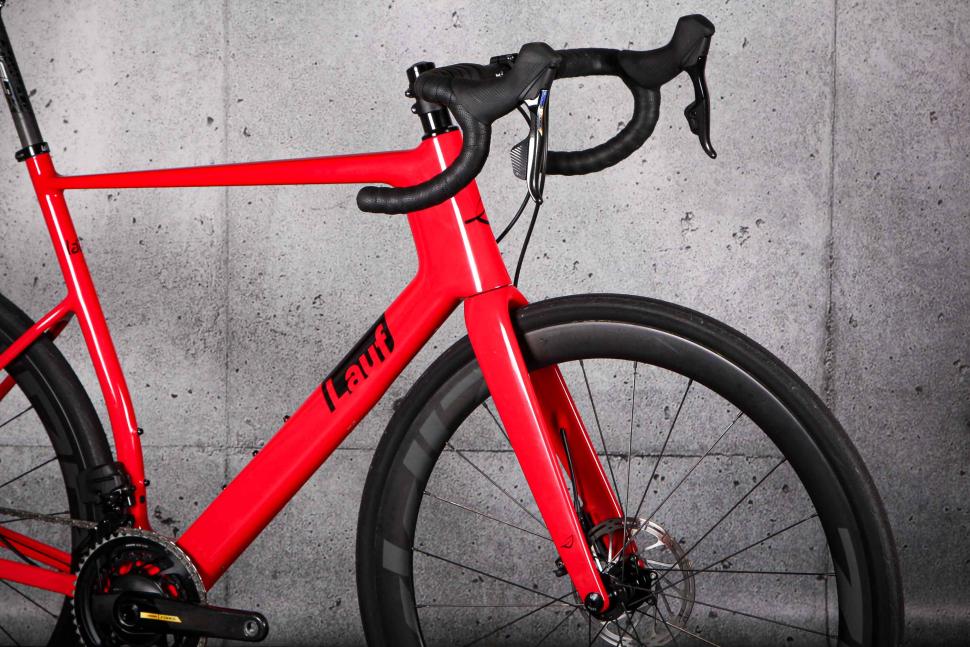
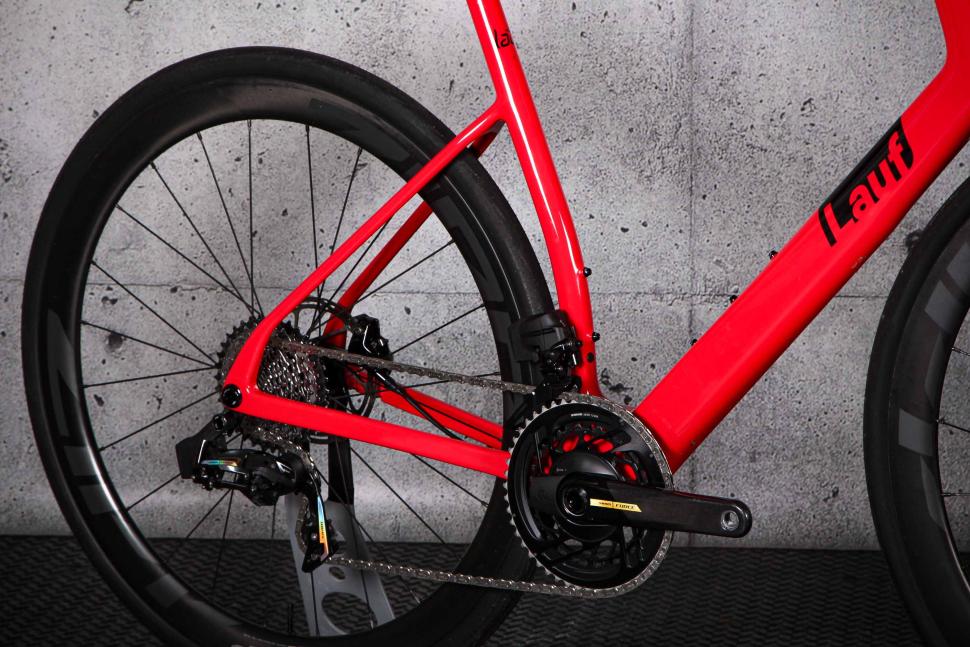


































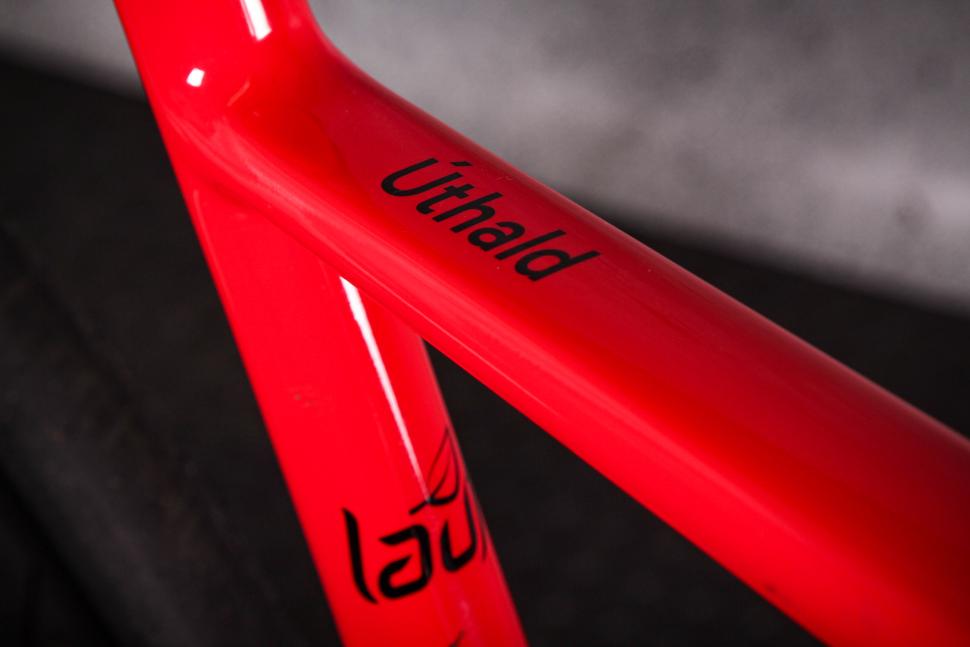

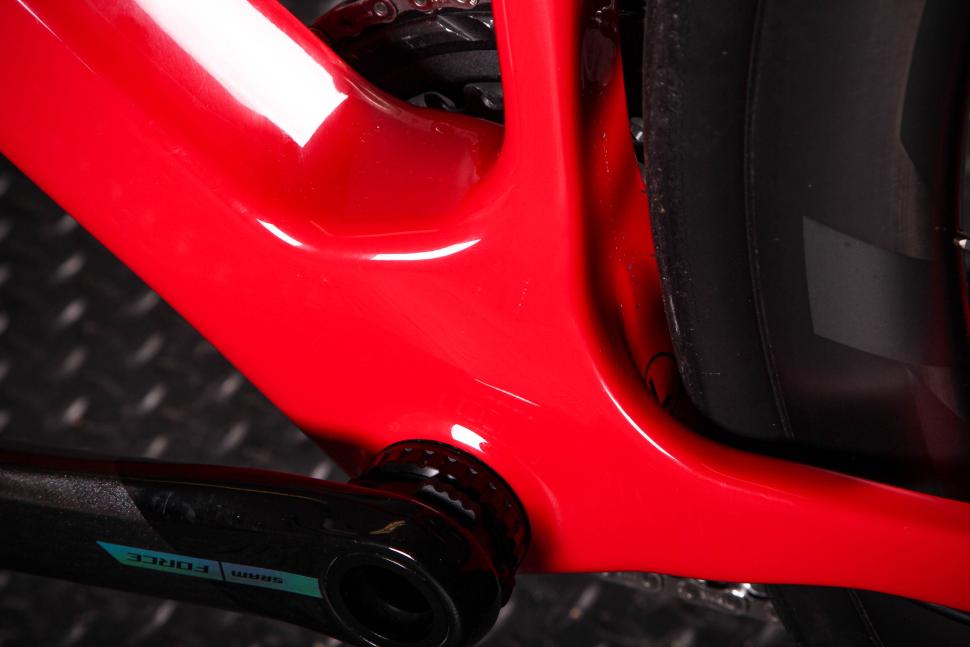



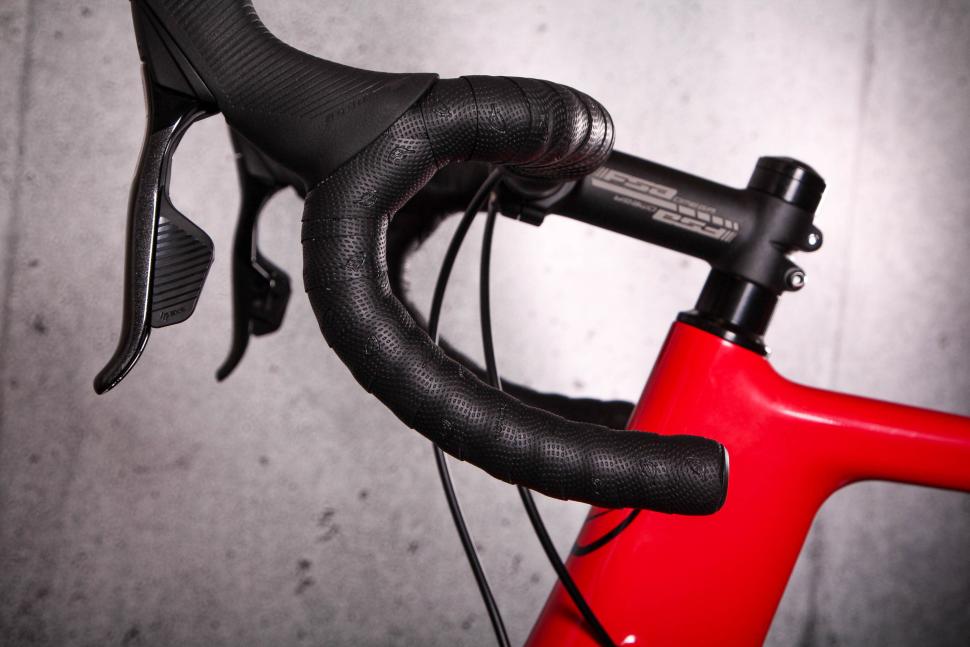
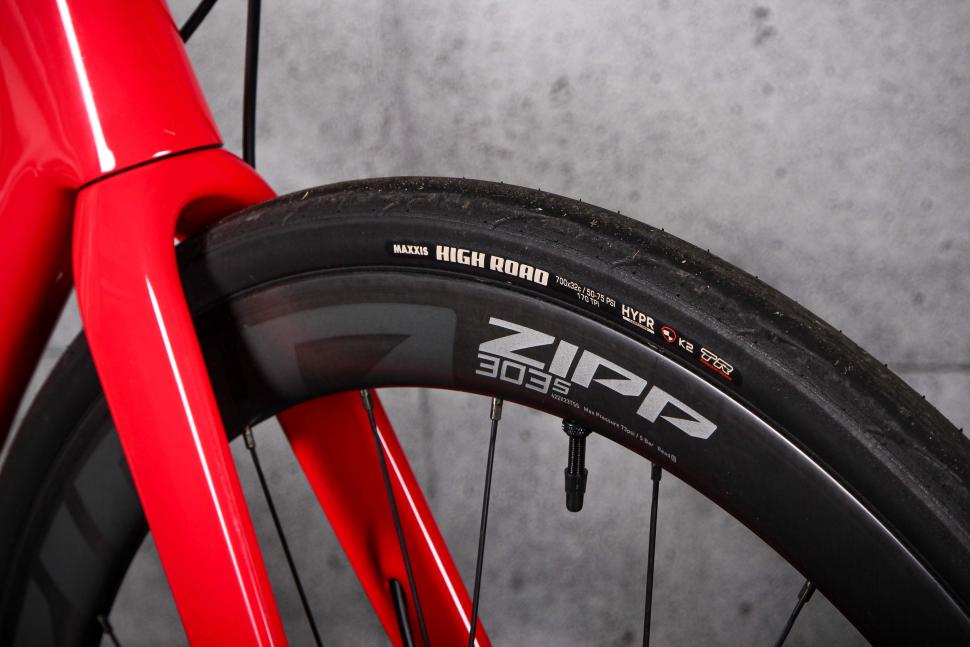
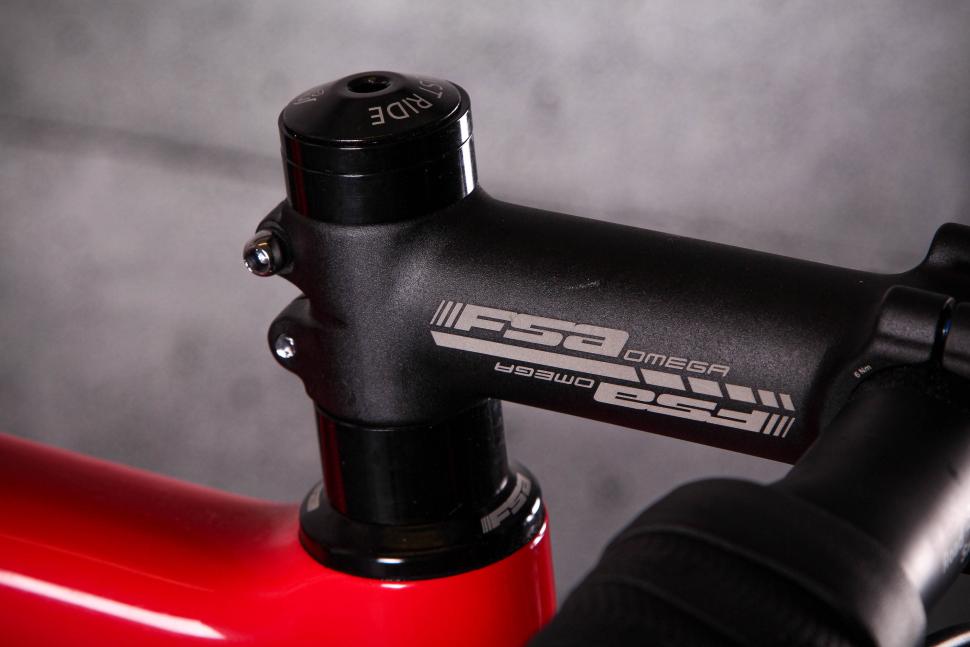
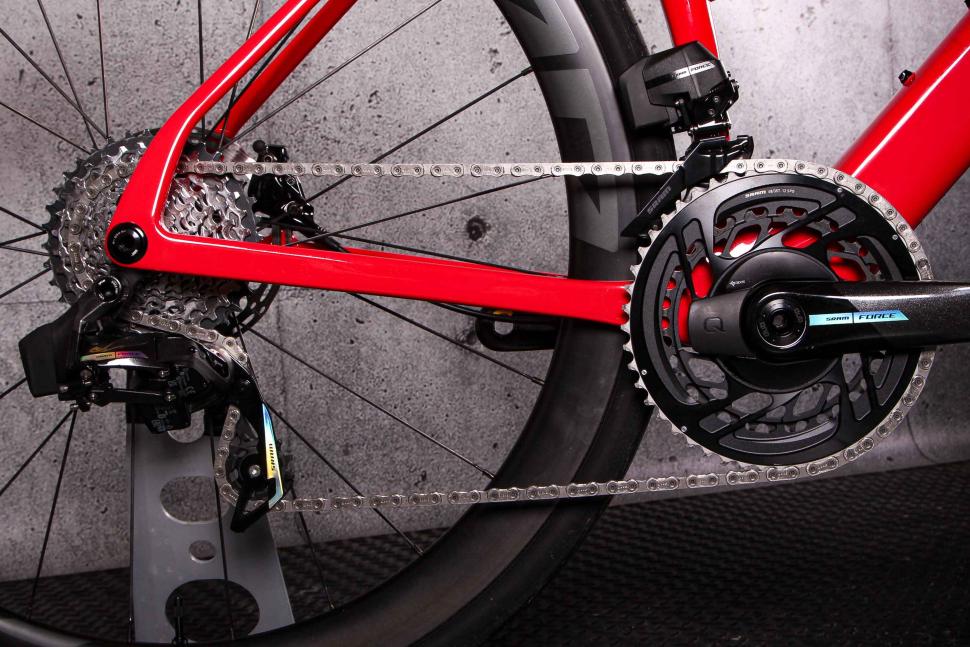
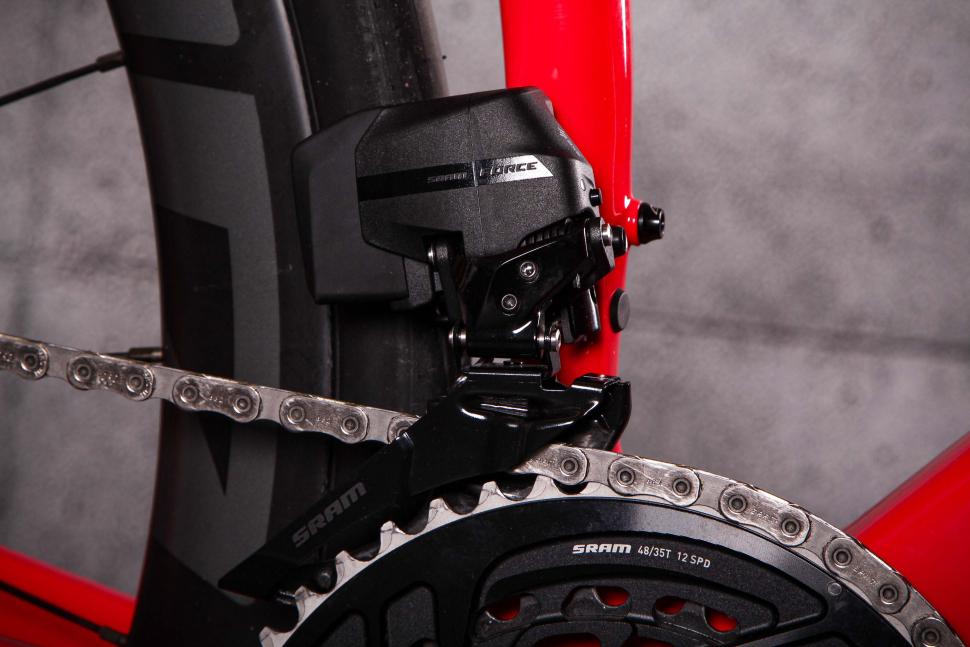
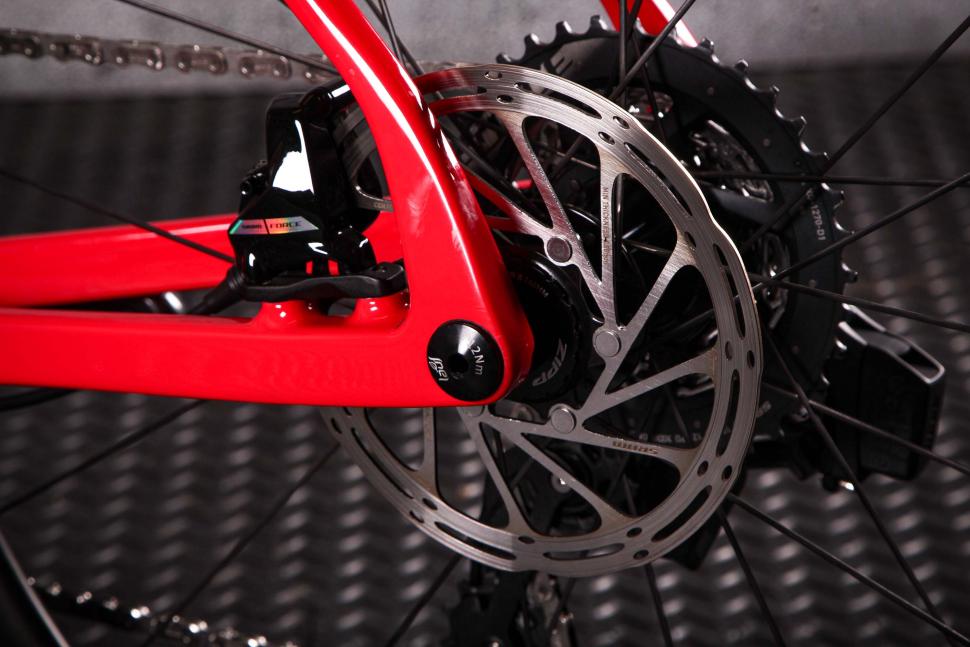
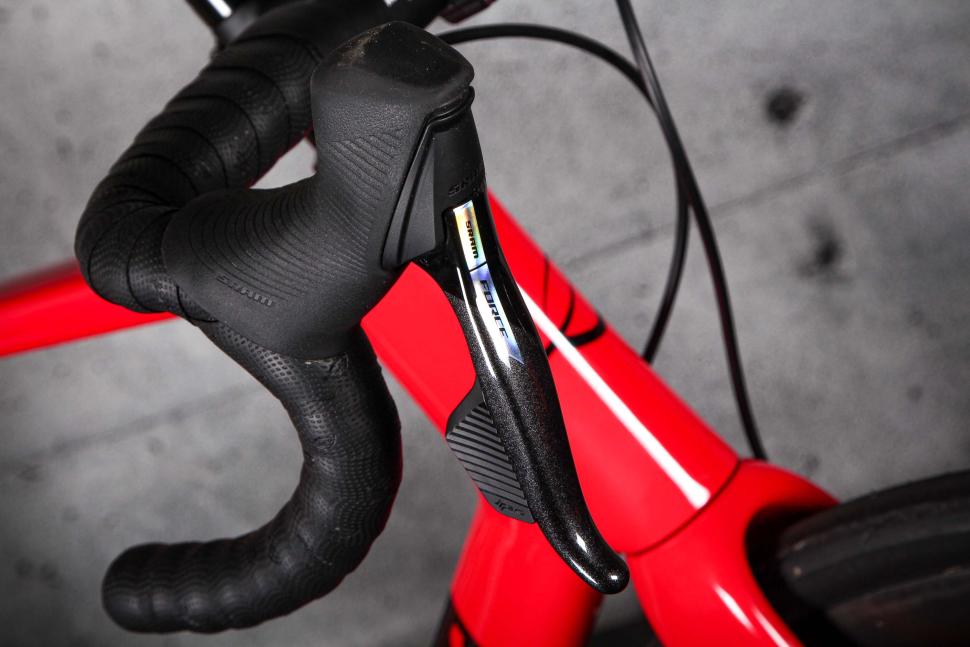
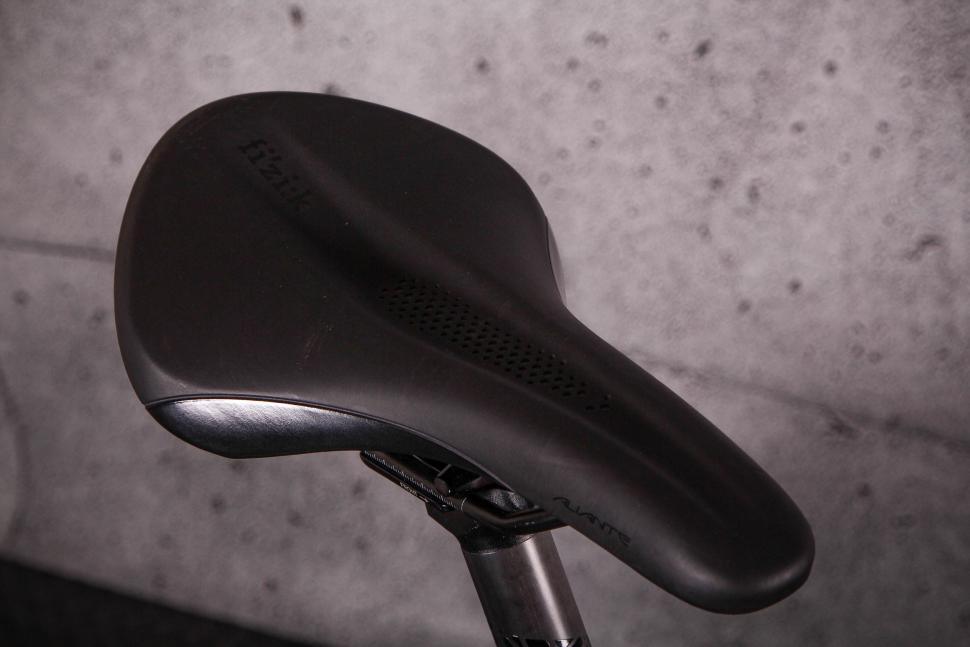
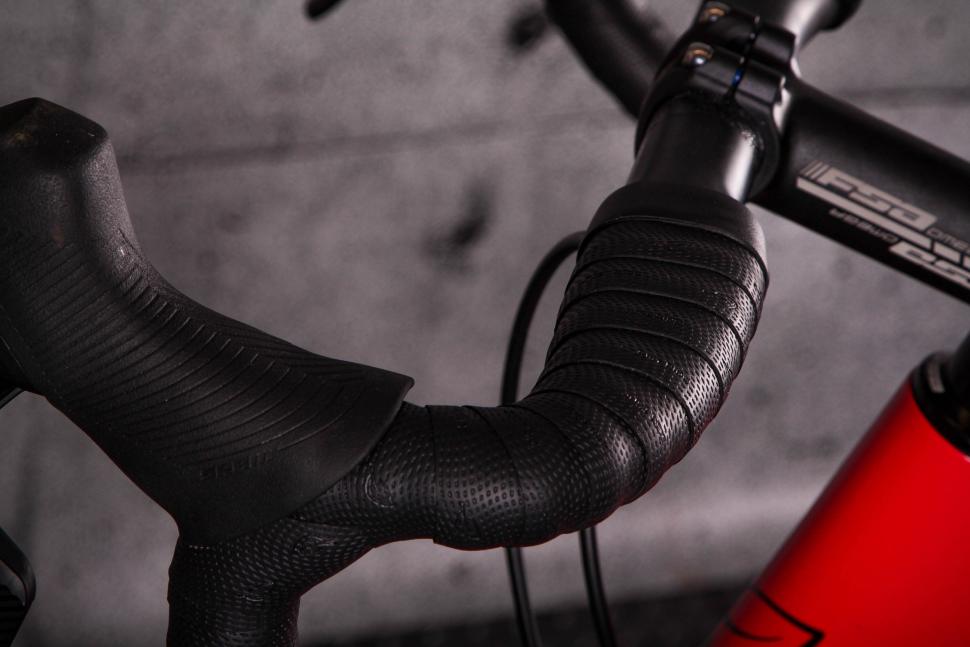
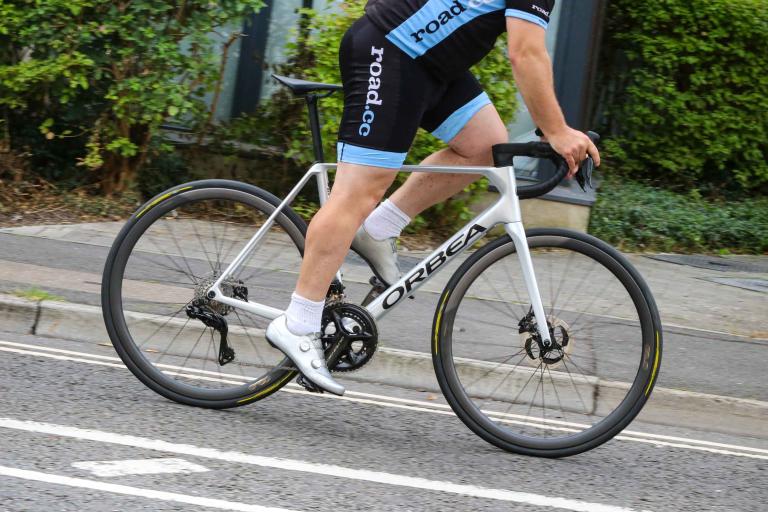
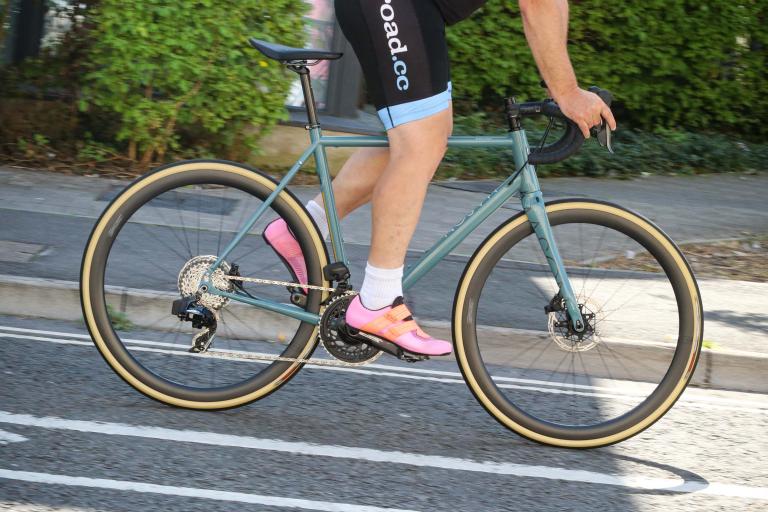
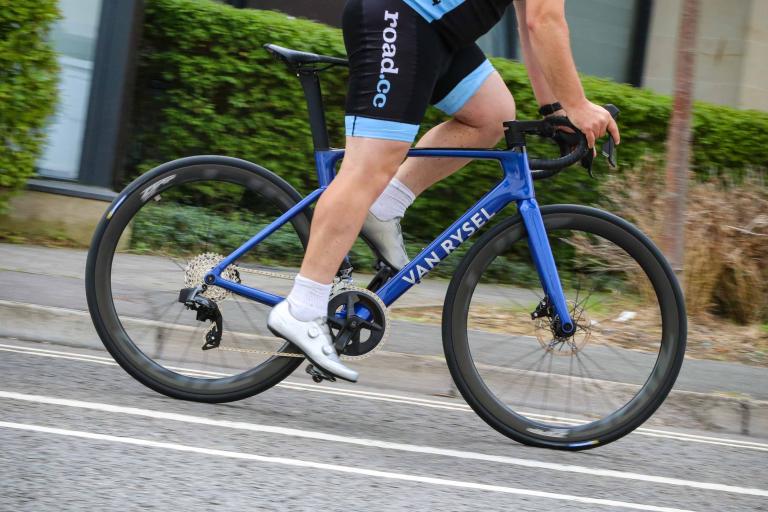
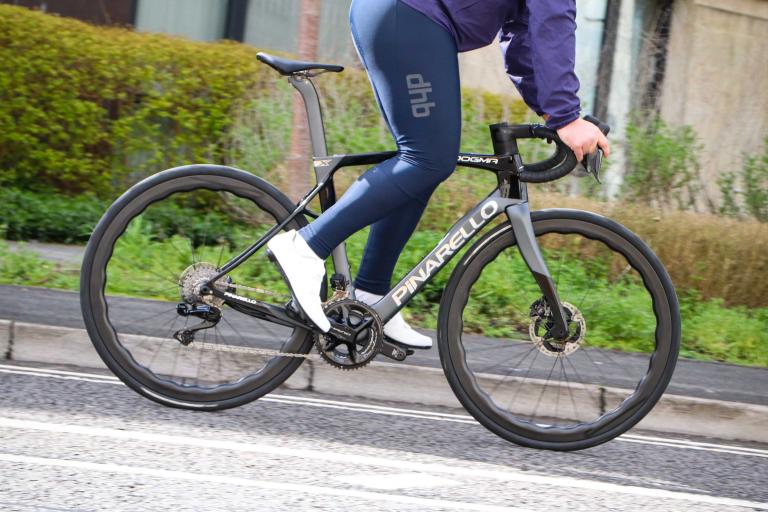
Add new comment
6 comments
I bought one. I live in North Devon and some of the roads round here are truly shocking. I was looking at a more aero bike but in the end decided I;d rather have a bike that was nice to ride than nice to look at. The Lauf is a revelation. It's much, much smoother than my old aluminium road bike - almost as plush, in fact, as my titanium gravel bike on 38mm tyres. It's also very quick, at least by my standards. I would highly recommend it.
There's a link to a Vitus bike. They seemingly can no longer be purchased following Fraser Group taking over Wiggle/CRC.
If they start selling them with Shimano builds (to match my current wheelsets) then this performance-meets-practically design will be my top choice.
I like the pragmatic thinking behind this, its the skoda octavia of bikes. And Dave's review is really well written and readable. Meanwhile nobody will buy one because they will still keep packing into their local specialized dealer to buy the latest tarmac.
Costing 15 times the price of a entry level road bike like the £300 Triban RC 100, I think it is more like Ferrari actually.
I like the sound of this bike, but the lack of mudguard mounts is off-putting given the state of the lanes I ride on.